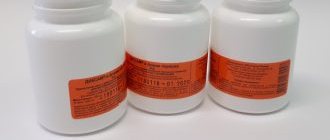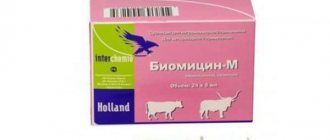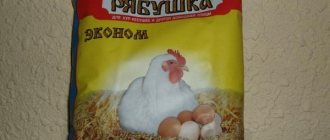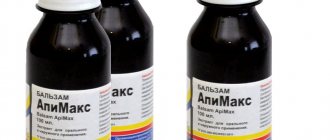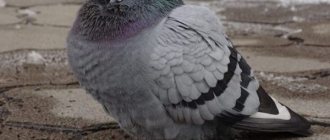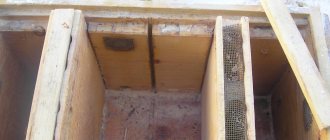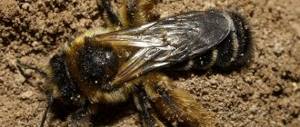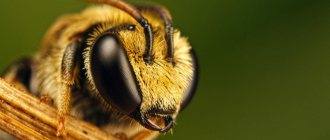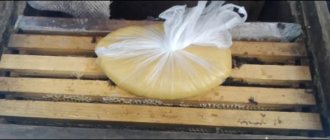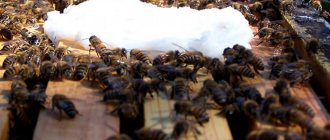Many beekeepers are faced with tick-borne diseases in their pets. Parasitic invasion leads to serious damage to the body of Hymenoptera. Bees lose their ability to fly and die. Varroa and Acarapis mites are especially common and dangerous. Insects quickly become infected with parasites from each other, and soon most of the inhabitants of the hive fall ill and die. In such cases, the drug for bees “Ant” can help. The instructions recommend using this product against acarapis and varroa mites.
What is the drug?
It has long been noted that ordinary forest ants are capable of destroying bee mites. What is this connected with? The body of ants produces a special caustic acid that has a detrimental effect on parasites. Based on this substance, a medicine for bees, “Ant,” was developed in 2001.
The drug looks like a gel-like mass of translucent color. The active ingredient is formic acid, which is why the medicine has a pungent, pungent odor.
The gel is packaged in acid-proof sachets. Each package contains 30 g of active ingredient. The sachets (4 pieces) are placed in a bottle with a tightly sealed lid.
Effect of the drug
"Ant" refers to acaricidal drugs. This product kills adult varroa and acarapis parasites. If the recommended doses and rules of use are followed, the medicine does not harm bees.
However, for humans and warm-blooded animals this drug belongs to the 3rd hazard class. Formic acid is an extremely caustic substance. If it comes into contact with the skin, it causes severe irritation, and if the vapors are inhaled, poisoning can occur. Therefore, when working with the drug for bees “Ant”, the instructions recommend being careful.
Formic acid does not penetrate bee products. If the hive has been treated with the drug, this will not affect the quality of honey or propolis. This remedy is much safer than other acaricidal drugs. Formic acid disintegrates quickly in open air.
Pharmacological properties
Formic acid destroys the cells of bacteria and fungi. Therefore, it is used as a preservative. It can also penetrate through any fat layer.
The hogweed plant causes burns
If we talk about animals and humans, fumes penetrate through the pores under the skin.
Known Properties:
- Pronounced action against Varroa mites and microscopic mites that cause acarapidosis;
- For humans, acid is a moderately dangerous substance that has an irritating effect on the upper respiratory tract, skin and conjunctiva of the eyes;
- Bees will not be affected if all dosages are followed.
The drug works most effectively not in summer, but in autumn.
| Advantage | Flaw |
| High flight range (up to 5 km) | Average productivity (honey, propolis) |
| Dry honey signet | Special attention to the choice of honey plant (see above) |
| Strong immunity | Almost no bee bread |
| No increased aggression | They almost never take early bribes |
| Wax production |
The numbers are the number of Varroa mites shed. Conclusion: for ticks in the fall, treatment with formic acid is carried out twice.
Bees "Karnika": characteristics and features
Indications and use
Varroatosis and acaracidosis of bees are the main indications for the use of the drug. It is these mites that are affected by formic acid. It is possible to note the bactericidal and fungicidal properties of the drug for bees “Muravyinka”. The instructions recommend using the product not only for medicinal but also for preventive purposes to avoid the appearance of the following parasites and microorganisms:
- wax moth;
- moths;
- Ascophera mold;
- intestinal parasite Nosema;
- pathogens of foulbrood diseases.
No side effects were noted when using “Muravinka”.
Treatment of bees with formic acid
Scientists have experimentally found that worker bees use effective formic acid to disinfect their own homes. Various types of formic acid are produced on an industrial scale, all of them are presented for sale in pharmacies.
Bipin for bees - instructions
To obtain the best results, use the class A ant preparation, a high-quality sample. In addition to the common varroa mites, the product has a positive effect against common diseases: foulbrood, ascopherosis, wax moth, and against many other parasites.
To achieve the best results, disinfection treatments are carried out twice during the spring awakening period. During this period, the effective drug “Bee” is also used to awaken bees after the spring flight. Repeated treatment is carried out once before wintering.
Attention! It is very important that the last treatment with formic acid occurs no later than before the start of honey collection. With this processing method, honey will contain virtually no concentrated acid; such a product will be absolutely suitable for consumption.
How to use the drug?
How to treat bees from varroatosis and acaracidosis using a product based on formic acid? You need to remove the sachets of gel from the bottle and put them in the hives, placing the drug under the canvases of the upper bars of the frames. In this case, it is necessary to observe the dosage - 1 sachet per 1 family with a strength of 5-12 streets. If the hive is multi-body, then 1 package per 1 body will be enough.
Under no circumstances should the bags be opened. They should be in their entirety. Formic acid vapor will be released through the packaging shell and affect pests. When the substance has completely evaporated, the bags must be disposed of by burying them underground to a depth of 30-40 cm. Usually the gel completely turns into steam within 3-5 days.
Treatment is done 2 times a year. In the spring, after wintering, the bees are inspected, and then you can immediately begin disinfecting the hive using the “Ant”. For acaracidosis of bees, triple treatment is necessary, and if there are cases of varroatosis in the hive, then applying the bags twice will be enough. The intervals between uses of the drug are about 5-7 days.
The second time the treatment is carried out in the summer-autumn period after the honey has been pumped out. The amount of the drug is the same as in the spring.
The treatment is carried out at an air temperature not lower than +12 degrees, but not higher than +25. In this case, the hive must be well ventilated, you need to open the entrances: upper and lower. If necessary, purification from propolis should be carried out.
If the product is used for prophylactic purposes, to prevent the appearance of wax moths and moths in the honeycomb storage, then the bags are placed on top of the frames. In this case, the dosage must be observed: 1-2 sachets per 10-12 frames. The storage facility should then be sealed.
Treatment methods
To combat mites in bees, chemical, physical, and biological treatments are used. For example, you can use smoke, oxalic and formic acid, essential oil, and medications. Fir oil is especially popular.
You can eliminate mites from bees using the following means:
- Heat treatment. High temperature has a detrimental effect on the tick. However, this treatment method is used infrequently. Many people are afraid to use heat treatment against varroa, since the steam effect can kill a huge number of bees.
- Chemicals, spray bottle and aromatic powders. With their help you can treat insects in the hive or cassettes. Under the influence of chemicals, the source of the disease suffocates and leaves the body of the bees. You can resort to chalk, talc, starch, flour or pine needles.
Key methods for treating bees against varroa:
- combined method – complex use of chemical, physical and other means selected taking into account the time of year, degree of disease and other factors;
- Essential oil, formic and oxalic acid are actively used against varroatosis. To achieve a better effect, these drugs are combined with medications;
- monitoring;
- the use of high-quality medicines - Apistan, Apigard and others. It is important to follow the instructions in the instructions, since if used incorrectly, varroa gets used to the medicine and it stops working;
- The best tool for diagnosing the disease is the biomechanical method. For this purpose, it is necessary to catch drones so that they cannot get closer to the queen.
How to feed bees in the autumn - the best tips for beekeepers
Precautionary rules
Sometimes novice beekeepers make mistakes when using the drug “Ant” for bees. The instructions indicate that when processing the hive it is important to adhere to the following rules:
- Small colonies of bees (up to 5 bees in size) should not be treated. Otherwise, the concentration of formic acid will be too strong. With a small number of bees, it is impossible to achieve good ventilation; elderly and weakened insects may die.
- An overdose of the drug should not be allowed. If instead of 1 package per bee colony you use 2 packages of gel, this can cause overexcitation and sometimes death of insects.
- The hive needs to be processed during the daytime. The bags should not be placed during rain or bad weather, otherwise the bees will not be able to ventilate the hive by flapping their wings.
- You need to work with the drug wearing rubber gloves and a respirator. Formic acid fumes can cause toxicity if inhaled.
Reviews about the product
Beekeepers speak positively about the “Ant” product. They notice a shedding of mites after the first treatment. At the same time, no cases of bees steaming were observed. The drug effectively destroyed parasites, but the domestic insects remained healthy.
Many note the convenience of packaging the drug. Formic acid has previously been used in beekeeping to combat mites. It was poured into a jar or bottle, covered with cardboard on top and left in the hive. But in this case, the effect of the substance was too aggressive, and the beekeeper risked getting burns and intoxication. The use of acid in the form of a gel, packaged in closed bags, made the treatment safer for both the beekeeper and his pets.
Sometimes there are reports of the death of queens after treatment. But in such cases the permissible dosage was exceeded or ventilation was insufficient. When using the product, you must carefully study the instructions and follow all recommendations.
Using a smoke cannon
Smoke treatment is the most effective in the fight against varroa. A smoke cannon is used to treat bees from varroa. This equipment is sold in specialized stores. This method is used in the spring.
Before using the smoke gun, according to the instructions supplied with the device, install a gas cylinder. It cannot be refilled. Fumigation of the hives occurs through the lower entrance.
Medicinal mixtures
In addition to acids in pure form or aqueous solutions, store-bought preparations and homemade compositions are used for fumigation. Among store-bought products, treatment and prevention are carried out with bisanar, varol, polysan and the drug CAS-81. Of the homemade formulations, 3 products are popular.
- A solution consisting of 15 ml of thymol, the same amount of oxalic acid and 100 ml of alcohol heated in a water bath to 50°C is good in the fight against varraotosis. This amount is enough to process 25 bee colonies.
- Beekeepers use a solution consisting of 5 ml of amitraz and 100 ml of purified alcohol. The drug is enough to fumigate 50 bee colonies.
- A solution consisting of 5 ml of taufluvanil and 100 ml of clean water is effective against varroatosis and other diseases. It is enough to fumigate 50 bee colonies.
Read also: Structure of a bee colony: composition, life and responsibilities
The design of the smoke cannon is simple; beekeepers can make an analogue with their own hands. The manufacturing process is similar to assembling designer parts taken from other devices: a fuel pump, a spark arrestor flask and a paint sprayer, a brake pipe from domestic cars. However, it is difficult to get a homemade design that works as efficiently as a factory product.
Smoke treatment is the most effective in the fight against varroa.
